DSR implemented MES system In Merx company.
Merx optimizes the production process
The Merx company in Poland deals with the precision machining of metals. The MES implementation led to minimising of downtime and machine failure, achieved the effective monitoring of working time and maintenance on the production line. The implementation, by DSR, allows Merx to observe the performance of their machines in real time and make necessary adjustments. For example on one machine achieved 15 % improvement in labour productivity.
Merx Polska specialises in the production of machine and vehicle parts, spare parts for the medical sector, aerospace, railway and different industrial equipment. Its offer also equipment and accessories for training, spare parts for hydraulic systems and trucks. The company’s customers include, Solaris, Hutchinson, Volvo, or PerkinElmer. Merx has modern machinery CNC based on control FENUC, SINUMERIC and MAZATROL, which allows to perform the most complex and precise components.
„The Merx plant has been developing dynamically for several years. All the time we invest in solutions enhancing the efficiency of the production plant and the individual machines. We have a computer program to design detail and for preparation processes to optimize the production time by maximizing the capabilities of the device. We also have a complete instrumentation and specialized measurement tools ” – says Radosław Kołacki, responsible for implementation on Merx side.
With a view to further improving the efficiency , the company management decided to implement an MES system of which the main objective was to increase the productivity of devices, minimizing downtime and failures and to increase awareness in the field of optimisation of the production process for the operators of CNC machines. This achieved significant improvements in these areas as a result of MES functionality that allows the monitoring and observation of the equipment utilisation rate in real time. Additionally, the system provides the ability to visualise the performance of the operators on the displays to give constant supervision of production.
„Every minute the equipment is idle is for us a huge loss. Therefore, it was important to implement a solutions that will significantly increase the productivity of each machine. Collecting a signal from the device in real time allows for the actual assessment of the efficiency and making the right decision about their use- says Radosław Kołacki.- By implementing an MES system, our managers have a complete overview on the production. One look is enough to find out which engine has failed, if it is at standstill and unplanned and how many devices are at changeover, what orders are running on various machine and who is currently operating .
„The CEO of Merx Gould did not imagine that after optimising the production process through the implementation of the production management system could even improve the efficiency of the company, so before the implementation of the system of all the machines, pilot implementation was conducted on single machine (5 axis CNC machine). By implementing the MES system we were able to increase productivity on this machine by a further 15 %. It was a good sign confirming that the implementation of the system throughout the company will bring positive results in a short time.” – says Kamil Mostowy, coordinating the implementation on DSR side.
The MES system introduced in Merx provides information on working time, downtime, micro-outages, performance and production volume in the context of the machine state (e.g. working shifts) or product (order). The system calculates in real time the efficiency ( OEE indicator). Thanks to the wide range of configuration, the architecture of system can be adapted to monitor the work of many and varying machines such as press, injection moulding machines, printing machines, packaging machines CNC machine tools and many other.
The Project of implementing the MES applications started in September 2015 and the use of the system was already possible at the beginning of January 2016. The implementation of solutions was preceded by an audit followed by testing the applications using a single device. The system is used by 32 machines operators and production managers.









